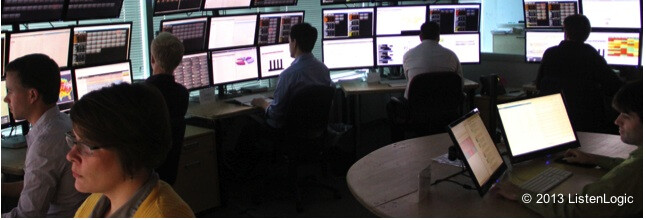With the billions of discussions taking place on a daily basis across the open social universe, millions of individuals – shoppers, consumers, customers, influencers, activists – are broadcasting their experiences, attitudes, opinions and actions with specific companies and brands. While a large portion of this commentary provides opportunities for enterprises, a significant segment also represents major risk to the enterprise.
With the billions of discussions taking place on a daily basis across the open social universe, millions of individuals – shoppers, consumers, customers, influencers, activists – are broadcasting their experiences, attitudes, opinions and actions with specific companies and brands. While a large portion of this commentary provides opportunities for enterprises, a significant segment also represents major risk to the enterprise.
Tracking and detecting social threats has become a critical objective for many organizations to identify, understand and respond to an enterprise risk landscape that is becoming increasingly complex to pace, manage and mitigate given the speed and reach of the open social universe.

A Multi-Front War
Today, enterprise risk has evolved based on a wide array of severe threats facing the organization and impacting groups ranging from Legal, Corporate Communications, Finance, Product, Human Resources, Compliance, Investor Relations, Consumer Relations and ultimately, the C-Suite. Among the major threats emerging from social media include:
- Product Liabilities
- Quality Issues
- Lawsuit Concerns
- Employee Misconduct
- Activist Campaigns
- Facility Security
- Technology Breaches
- Sabotage Incidents
- Regulatory Issues
- Extortion Attempts
- Personnel/Executive Security
- Reputational Risks
Perhaps the largest issue for the enterprise, aside from keeping up with the myriad of emerging threats, is that speed is critical and truth is optional with many of these situations. Individuals have a massive forum to make claims against the corporation that are not necessarily factual.
Social Study: Disney
Few corporations are immune to these types of threats, particularly those that have a consumer base. Even a corporation like The Walt Disney Company, which has a strong brand affinity among consumers, is a target for a wide variety of open social risks. As an example, over a one-month tracking period of nearly five million open social discussions on Disney, a wide array of potential threats were identified.
Among the identified threats, six percent of open social conversations featured individuals and, in many cases, activists, speaking out against Disney on topics like child safety, animal wellbeing, racism, sexism, copyrights and media control.
Within the data population another three percent of discussions focused on safety, security and trust related to the organization. Four percent of the company-related conversations referenced legal issues and lawsuits against Disney with allegations of mistreatment, injuries and discrimination, among others.
This is simply an illustration of the massive volume and variety of potential threats facing corporations in today’s online social world and the fact that no corporation is immune.
“Big Data” Backbone
In order to manage the volume, velocity and variety of these emerging risks and have the capability to identify the one critical threat out of one million posts in mere seconds, many leading corporations are now relying on streaming ‘big data’ processing to keep pace with the speed and complexity of the open social universe. The key to extracting this risk intelligence is to achieve a holistic view of the open social universe rather than traditional limited views with data samples of mainstream social networks like Twitter. In other words, the enterprise needs a complete sphericalview given that threats can emerge from any individual on any source at any time.
While tracking the mainstream social networks is important given that they represent a massive volume of discussion, they also typically contribute huge amounts of irrelevant “noise” that has to be efficiently filtered out. With this, there is typically a wealth of insight that is derived from the millions of blogs, forums, communities and open sites, which are often overlooked with first-generation social monitoring tools.
In order to analyze the data in real-time, complex concept models are used in place of narrow keyword lists. Keyword lists can identify specifically defined items that are known and apparent. However, to detect and identify the unknown and unapparent emerging threats that can manifest in countless forms these concept models are critical to enterprise risk management.
Many companies have resorted to building “social command centers,” however these centers are largely focused on the number of display screens rather than the technology driving the results. The companies construct slick ‘Mission Control’ looking centers, but opt to run narrow, first-generation, keyword-based tools that aren’t adequate to handle the volume or complexity of social ‘big data.’
The Bottom Line
The bottom line is that the online social world is colliding with the enterprise risk management world, presenting exponential threats to organizations on a multidimensional level never seen before. While many companies are embracing the proactive protection of their business with advanced social intelligence and threat detection delivered by ‘big data’ social risk intelligence solutions, many companies are exposing themselves to greater risk by ignoring these threats due to the perception that social media is primarily about tweets, likes and ‘buzz.’
Unfortunately, the driver for many corporations to finally take these threats seriously with an advanced ‘big data’ social risk solution is to simply experience a crisis that damages the organization’s reputation firsthand, a painful lesson.
Examples in this article are borrowed with permission from the book Social Business Intelligence: Reducing Risk, Building Brands and Driving Growth with Social Media (© 2013, 191 pgs., Ascendigm Press).